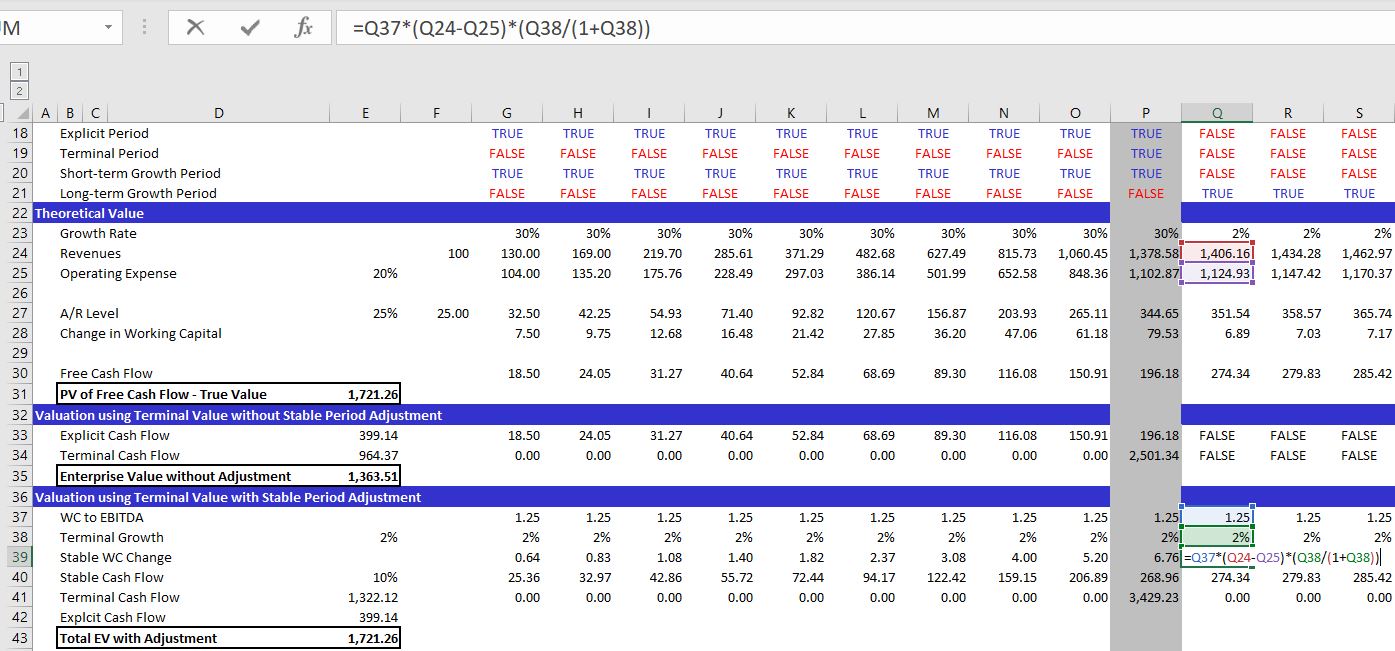

Finance
How To Buy Stocks With PayPal
Published: January 17, 2024
Learn how to buy stocks with PayPal and simplify your investment process. Finance your future with ease and convenience.
(Many of the links in this article redirect to a specific reviewed product. Your purchase of these products through affiliate links helps to generate commission for LiveWell, at no extra cost. Learn more)
Table of Contents
- Introduction
- The Benefits of Buying Stocks with PayPal
- Step 1: Setting Up a PayPal Account
- Step 2: Linking a Bank Account or Credit Card to PayPal
- Step 3: Researching and Choosing the Right Stockbroker
- Step 4: Verifying Your PayPal Account
- Step 5: Funding Your PayPal Account
- Step 6: Finding and Selecting Stocks to Buy
- Step 7: Placing a Buy Order
- Step 8: Monitoring and Managing Your Stocks
- Conclusion
Introduction
Buying stocks has long been an attractive investment option for individuals looking to grow their wealth. In the past, the process of buying stocks involved contacting a traditional stockbroker, filling out paperwork, and often incurring high brokerage fees.
However, with the advent of technology and the rise of online financial platforms, buying stocks has become more accessible and affordable for individuals. One popular method for purchasing stocks is through PayPal, a well-known and widely used online payment service.
In this article, we will explore the steps involved in buying stocks with PayPal and the benefits it offers. Whether you are a seasoned investor or new to the stock market, this guide will provide you with the knowledge and confidence to start investing in stocks using PayPal as your payment method.
Using PayPal to buy stocks offers several advantages. First and foremost, it provides a convenient and secure way to make your stock purchases. PayPal is known for its robust security measures and buyer protection policies, which can give investors peace of mind when conducting their financial transactions.
In addition, using PayPal eliminates the need for a traditional bank account or credit card to fund your stock purchases. This can be advantageous for those who prefer to keep their banking and investing activities separate or for individuals who may not have access to traditional banking services.
Furthermore, buying stocks with PayPal allows for quick and seamless transactions. Unlike traditional stockbrokers, who may require manual processing of orders, PayPal enables instant fund transfers, allowing you to take advantage of market opportunities without delay.
Lastly, buying stocks with PayPal can provide you with greater financial flexibility. PayPal offers various funding options, including bank transfers and credit card payments, giving you the freedom to choose the method that best fits your financial situation.
In the following sections, we will delve into the detailed steps involved in buying stocks with PayPal, from setting up a PayPal account to placing a buy order. By following these steps, you’ll be well on your way to becoming a successful investor in the stock market.
The Benefits of Buying Stocks with PayPal
When it comes to investing in the stock market, using PayPal as your payment method offers several distinct advantages. Let’s explore some of the key benefits:
- Convenience: One of the primary benefits of buying stocks with PayPal is the convenience it offers. PayPal provides a seamless and user-friendly interface that allows you to easily manage your investments. You can monitor your portfolio, execute trades, and track your performance with just a few clicks.
- Security: PayPal is known for its robust security measures, which can provide investors with peace of mind. The platform utilizes encrypted transactions and advanced fraud protection to ensure the safety of your financial information. In addition, PayPal offers buyer protection policies that can safeguard your investments against unauthorized transactions.
- Accessibility: Another significant benefit of buying stocks with PayPal is the accessibility it offers. Unlike traditional stockbrokers that may have minimum investment requirements, PayPal allows you to start investing with smaller amounts. This means that even if you have limited capital, you can still participate in the stock market and have the opportunity to grow your wealth over time.
- Flexibility: PayPal provides a range of funding options, giving you the flexibility to choose how you want to finance your stock purchases. You can link your PayPal account to your bank account, credit card, or even use the balance available in your PayPal account to fund your investments. This flexibility allows you to choose the funding method that suits your financial situation best.
- Speed: When it comes to investing, time is of the essence. With PayPal, you can execute stock trades almost instantly. Unlike traditional methods that may require manual processing and paperwork, PayPal enables quick and seamless transactions. This allows you to take advantage of market opportunities and make timely investment decisions.
- Budgeting and Tracking: PayPal offers robust budgeting and tracking features that can help you stay on top of your investments. You can set up spending limits, create financial goals, and easily monitor your investment performance. These tools can be invaluable in managing your portfolio and enhancing your overall investing experience.
These are just a few of the benefits that buying stocks with PayPal can offer. As you embark on your investment journey, it’s important to carefully weigh your options and choose the platform that aligns with your financial goals and preferences. With PayPal, you can enjoy the convenience, security, and accessibility needed to navigate the exciting world of stock market investing.
Step 1: Setting Up a PayPal Account
The first step in buying stocks with PayPal is to set up a PayPal account if you don’t already have one. Here’s how you can do it:
- Go to the PayPal website: Open your web browser and visit the official PayPal website at www.paypal.com.
- Create a new account: Click on the “Sign Up” or “Create an Account” button, usually located on the top right corner of the website. You will be prompted to choose between a personal account or a business account. For buying stocks as an individual investor, select the personal account option.
- Provide your personal information: Fill in the required details, including your legal name, email address, and password. Make sure to choose a strong and secure password to protect your account.
- Verify your email: After providing your email address, PayPal will send you a verification email. Go to your email inbox and click on the verification link to confirm your email address.
- Choose security questions: Select and answer security questions that will be used to verify your identity in case you need to access your account or reset your password in the future.
- Agree to the terms and conditions: Read through the PayPal terms and conditions, privacy policy, and user agreement. If you agree to these terms, check the box to confirm your acceptance.
- Complete the account setup: Follow the on-screen instructions to complete the remaining steps of the account setup process. This may include providing additional personal information, such as your address and phone number.
Once you have successfully set up your PayPal account, you will have access to a range of features and services, including the ability to buy stocks. However, before you can start purchasing stocks, there are a few more steps to complete in order to link your bank account or credit card to your PayPal account.
Next, let’s move on to step 2 and learn how to link a bank account or credit card to your PayPal account.
Step 2: Linking a Bank Account or Credit Card to PayPal
After setting up your PayPal account, the next step is to link a bank account or credit card to enable funding your stock purchases. Here’s how you can do it:
- Log in to your PayPal account: Go to the PayPal website and sign in to your account using your email address and password.
- Navigate to the “Wallet” tab: Once logged in, you’ll be taken to your PayPal account overview. Click on the “Wallet” tab, usually located at the top of the page, to access your payment methods.
- Add a bank account or credit card: On the “Wallet” page, you will see the option to “Link a Bank Account” or “Link a Card.” Choose the appropriate option depending on your preferred funding method for buying stocks.
- Provide the required information: Follow the on-screen instructions to enter the necessary information for linking your bank account or credit card. This may include providing your bank account number, routing number, or credit card details.
- Confirm your linked account or card: After entering the required information, PayPal will verify the account or card by making a small transaction or by sending a unique code to your bank statement. Check your bank statement or card statement for the verification code or transaction amount and enter it in the appropriate field on the PayPal website to confirm the link.
- Check the status: Once you have provided the necessary information and completed the verification process, your bank account or credit card should now be linked to your PayPal account. You can view the status of the linked account or card in the “Wallet” tab of your PayPal account.
By linking a bank account or credit card to your PayPal account, you can easily fund your stock purchases. PayPal offers various funding options, allowing you to choose the method that best suits your needs and preferences. It’s important to note that PayPal may impose certain transaction limits or for security reasons, so make sure to check any requirements or restrictions before proceeding.
Now that you have successfully linked your bank account or credit card to your PayPal account, you can proceed to the next step: researching and choosing the right stockbroker.
Step 3: Researching and Choosing the Right Stockbroker
Once you have set up your PayPal account and linked a bank account or credit card, the next step in buying stocks with PayPal is to research and choose the right stockbroker. A stockbroker is a licensed professional or firm that facilitates the buying and selling of stocks on behalf of investors. Here’s how you can find and select a suitable stockbroker:
- Identify your investment goals: Before choosing a stockbroker, it’s essential to determine your investment goals and strategy. Consider factors such as your risk tolerance, investment time horizon, and the type of stocks you are interested in. This will help you narrow down your options and choose a stockbroker that aligns with your investment objectives.
- Research reputable stockbrokers: Conduct thorough research on different stockbrokers available in the market. Look for brokers that are well-established, have a good reputation, and are regulated by relevant financial authorities. Consider factors such as the range of investment options, commission fees, customer support, and user-friendly trading platforms.
- Compare commission fees: Pay attention to the commission fees charged by stockbrokers for executing trades. Some brokers offer competitive commission rates or even commission-free trading, which can be beneficial for frequent traders. However, be sure to also consider other aspects, such as trading tools and research resources, as the lowest commission fees may not always be the best option.
- Check available investment options: Ensure that the stockbroker you choose offers a wide range of investment options, including the stocks you are interested in. Some brokers specialize in specific markets or sectors, while others provide access to a diverse portfolio of stocks from around the world. Make sure the stockbroker allows you to invest in the stocks that align with your investment strategy.
- Evaluate the trading platform: The trading platform provided by the stockbroker is crucial for executing trades effectively. Look for a platform that is user-friendly, intuitive, and offers advanced features such as real-time market data, charting tools, and order management capabilities. A well-designed and reliable trading platform can enhance your investment experience.
- Consider customer support: Good customer support is essential when dealing with a stockbroker. Check the availability and responsiveness of customer support channels, such as phone, email, or live chat. Prompt and knowledgeable customer support can be crucial when you have questions or need assistance with your account or trades.
By carefully researching and evaluating different stockbrokers, you can choose one that best suits your investment needs and preferences. Take your time to compare options, read reviews, and consider recommendations from trusted sources. Once you have selected the right stockbroker, you can proceed to the next step: verifying your PayPal account.
Step 4: Verifying Your PayPal Account
After setting up your PayPal account and linking a bank account or credit card, the next step in buying stocks with PayPal is to verify your account. Verifying your PayPal account adds an extra layer of security and unlocks certain features and benefits. Here’s how you can verify your PayPal account:
- Log in to your PayPal account: Go to the PayPal website and sign in to your account using your email address and password.
- Navigate to the account settings: Once logged in, click on the “Settings” or “Profile” tab, usually located near the top of the page. From there, select the “Account Settings” or “Profile Settings” option.
- Complete the identity verification: On the account settings page, you will find an option to “Confirm Your Identity” or “Get Verified.” Click on this option to start the verification process.
- Provide the required information: PayPal may require you to provide additional personal information to verify your identity. This may include details such as your legal name, address, date of birth, and social security number or national identification number.
- Submit supporting documents: In some cases, PayPal may request supporting documents to verify your identity. These documents may include a copy of your government-issued ID, proof of address (such as a utility bill or bank statement), or other documentation as required.
- Confirm the verification: After providing the necessary information and documents, review the details and click on the “Submit” or “Confirm” button to initiate the verification process.
- Wait for verification: PayPal will review the information and documents you provided to verify your account. This process may take a few days, and PayPal may reach out to you for additional information or clarification if needed.
- Check the account status: Once your account is verified, PayPal will notify you via email, and you will see a notification or a green checkmark indicating the verified status in your account settings. You can now enjoy the full benefits of a verified PayPal account.
Verifying your PayPal account adds an extra layer of security and trust, not only for your stock purchases but also for other online transactions. It helps protect against unauthorized account access and ensures a safer investing experience.
Now that your PayPal account is verified, you are ready to move on to the next step: funding your PayPal account in preparation for buying stocks. This will be covered in step 5.
Step 5: Funding Your PayPal Account
Once your PayPal account is verified, the next step in buying stocks with PayPal is to fund your account. Funding your PayPal account will provide you with the necessary funds to purchase stocks. Here’s how you can fund your PayPal account:
- Log in to your PayPal account: Go to the PayPal website and sign in to your account using your email address and password.
- Click on the “Wallet” tab: Once logged in, navigate to the “Wallet” tab, usually located at the top of the page. This will take you to the page where you can manage your PayPal balance and linked payment methods.
- Select “Add money” or “Add funds”: On the “Wallet” page, look for the option to “Add money” or “Add funds” and click on it. This will open up the funding options for your PayPal account.
- Choose your funding source: PayPal offers various funding sources, including linked bank accounts and credit cards. Select the funding source you want to use to deposit money into your PayPal account.
- Enter the amount: Specify the amount of money you want to add to your PayPal account. Make sure you have sufficient funds in your chosen funding source to cover the desired deposit amount.
- Confirm the deposit: Review the transaction details, including the funding source and the deposit amount. Once you are satisfied, click on the “Confirm” or “Add” button to initiate the deposit. PayPal may require you to complete additional security measures, such as two-factor authentication, to confirm the transaction.
- Check your PayPal balance: After completing the deposit process, you can check your PayPal account balance to ensure that the funds have been successfully added. The updated balance will be displayed on the “Wallet” page of your PayPal account.
Once your PayPal account is funded, you will have the necessary funds to buy stocks. Remember to consider any transaction limits or fees that may apply when adding money to your PayPal account. It’s also a good practice to regularly review your account balance and add funds as needed to facilitate your investment activities.
With your PayPal account funded, you are now prepared to move forward to the next step: finding and selecting the stocks you want to buy. This will be covered in step 6.
Step 6: Finding and Selecting Stocks to Buy
With a funded PayPal account, you are now ready to find and select the stocks you want to buy. Here’s how you can start your search and make informed investment decisions:
- Research different companies: Begin by researching different companies that you are interested in investing in. Look for information such as their financial performance, growth prospects, competitive advantage, and industry trends. This will help you assess the potential return on investment and evaluate the risks associated with each stock.
- Utilize financial tools and resources: Take advantage of financial tools and resources available online to gather relevant data and insights. Websites, financial news platforms, and stock analysis tools can provide you with valuable information, including historical stock prices, earnings reports, and analyst recommendations.
- Consider your investment strategy: Determine your investment strategy and risk tolerance before selecting stocks. Are you looking for long-term growth, dividends, or value investments? Are you comfortable with higher-risk stocks or do you prefer a more conservative approach? Align your stock selection with your investment goals and risk preferences.
- Analyze company fundamentals: Dive deeper into the financials of the companies you are considering. Pay attention to metrics like earnings per share (EPS), price-to-earnings (P/E) ratio, debt levels, and revenue growth. Assessing the fundamental health of a company can help you make more informed investment decisions.
- Consider market trends and macroeconomic factors: Stay informed about market trends and macroeconomic factors that can influence stock prices. Monitor indicators such as interest rates, inflation, consumer sentiment, and geopolitical events. Understanding how these factors can impact the overall market can assist you in making strategic investment moves.
- Use stock screeners: Consider using stock screeners to filter and narrow down your search. Stock screeners allow you to set specific criteria, such as market capitalization, sector, dividend yield, and earnings growth. These tools can help you identify stocks that meet your specific investment criteria.
- Seek professional advice if needed: If you are new to investing or feel overwhelmed by the research process, it can be beneficial to seek professional advice from financial advisors or investment professionals. They can provide expert guidance and support to help you make informed investment decisions.
Remember, investing in stocks involves risks, and no investment is guaranteed. It’s essential to conduct thorough research, diversify your portfolio, and make decisions based on your financial goals and risk tolerance. Take your time to carefully analyze and select the stocks that align with your investment strategy and have the potential to generate long-term returns.
Once you have identified the stocks you want to buy, you can move on to the next step: placing a buy order through your chosen stockbroker.
Step 7: Placing a Buy Order
After conducting thorough research and selecting the stocks you want to purchase, the next step in buying stocks with PayPal is to place a buy order. Placing a buy order is the process of requesting to purchase specific stocks at a specified price. Here’s how you can place a buy order:
- Log in to your stockbroker account: Go to the website or app of the stockbroker you selected and log in to your account using your credentials.
- Navigate to the order placement page: Once logged in, look for the option to place a new order. This is typically found on the homepage, trading dashboard, or a designated order placement page.
- Select the stock you want to buy: On the order placement page, search for the stock you want to purchase by its ticker symbol or company name. It’s a good practice to double-check the stock symbol to ensure accuracy.
- Specify the type of order: Choose the type of order you want to place. The most common types include market orders, limit orders, and stop orders. A market order executes the trade immediately at the current market price. A limit order sets a specific price at which you want to buy the stock, and it will only execute if the stock reaches that price. A stop order sets a specified price at which you want to buy the stock, but it will only execute if the stock’s price surpasses that price.
- Enter the quantity: Specify the number of shares of the stock you want to purchase. Ensure that you have sufficient funds available in your PayPal account to cover the purchase.
- Set the price (if applicable): If you are placing a limit order or a stop order, enter the price at which you want to execute the trade. Make sure the price you set is reasonable and in line with the prevailing market prices.
- Review and confirm the order: Carefully review the order details, including the stock, order type, quantity, and price. Confirm that the information is accurate before progressing.
- Place the buy order: Once you are confident with the order details, click on the “Place Order” or “Buy” button to submit your order. The stockbroker will process the order, and you will receive a confirmation of the trade.
It’s important to note that stock prices can fluctuate quickly, and the execution of your order may depend on market conditions. If the stock reaches the specified price (for limit or stop orders) or if there are available shares at the current market price (for market orders), your order will be executed. However, if market conditions change drastically, the execution may be delayed or the order may be partially filled.
After placing your buy order, it’s advisable to monitor your stock positions and market movements. Regularly review your portfolio and stay informed about any relevant news or developments that may impact your investments.
Now that you have placed your buy order, the next step is to move on to managing and monitoring your stocks, which will be covered in step 8.
Step 8: Monitoring and Managing Your Stocks
After successfully placing your buy order and acquiring stocks, it’s essential to monitor and manage your investment portfolio. Active monitoring and management can help you make informed decisions and maximize your investment returns. Here’s how you can effectively monitor and manage your stocks:
- Stay informed: Keep yourself updated with relevant news, market trends, and company-specific events that could impact your stocks. Regularly read financial news, follow market analysts, and consider subscribing to newsletters or alerts that provide insights into the stocks you own.
- Set realistic expectations: Understand that stock prices can fluctuate, and it’s important to set realistic expectations regarding the performance of your stocks. Avoid making impulsive decisions based on short-term market movements and focus on the long-term growth potential of your investments.
- Review your portfolio periodically: Take the time to review your investment portfolio on a regular basis. Assess the performance of each stock, evaluate whether the stocks still align with your investment goals, and consider rebalancing if necessary.
- Implement risk management strategies: Consider implementing risk management strategies, such as setting stop-loss orders or trailing stop orders, to protect your investment. These tools can help minimize losses if a stock’s price declines beyond a certain threshold.
- Stay diversified: Diversify your investment portfolio across different industries, sectors, and asset classes to mitigate risk. By spreading your investments, you can reduce the impact of any single stock’s poor performance on your overall portfolio.
- Consider additional research: Continually educate yourself about investing and conduct additional research on the companies you own. Read annual reports, listen to earnings calls, and stay informed about the fundamental aspects of your stocks. This will help you make informed decisions and identify opportunities for potential growth.
- Make disciplined decisions: Avoid making impulsive investment decisions based on emotions or short-term market fluctuations. Instead, focus on the long-term goals of your investment strategy and make disciplined decisions based on careful analysis and your original investment thesis.
- Regularly review and adjust your strategy: As your financial situation and goals evolve, regularly reassess your investment strategy. Adjust your portfolio holdings, reallocate funds, and make strategic decisions based on your changing circumstances and objectives.
Remember that investing in stocks is a long-term endeavor, and it requires patience, discipline, and ongoing attention. By actively monitoring and managing your stocks, you can stay in control of your investments and make deliberate decisions to optimize your returns.
Congratulations! You have completed all the steps involved in buying stocks with PayPal. By following this guide, you now have the knowledge and tools to confidently navigate the stock market and make informed investment decisions using PayPal as your payment method. Happy investing!
Conclusion
Buying stocks with PayPal offers a convenient and accessible way for individuals to participate in the stock market and potentially grow their wealth. In this guide, we have explored the step-by-step process of buying stocks with PayPal, from setting up a PayPal account to monitoring and managing your investments. Let’s recap the key points:
First, we discussed the benefits of using PayPal as a payment method for buying stocks, including convenience, security, accessibility, flexibility, and speed. PayPal’s robust security measures and user-friendly interface make it a popular choice for investors.
We then delved into the steps involved in setting up a PayPal account, linking a bank account or credit card to your PayPal account, and verifying your account. These steps ensure that your PayPal account is ready to fund your stock purchases securely.
Researching and choosing the right stockbroker is a crucial step in the process. We explored considerations such as reputation, commission fees, investment options, trading platforms, and customer support while selecting a suitable stockbroker.
Funding your PayPal account is the next step, and we covered how to do this by adding money from your linked bank account or credit card. A funded PayPal account allows you to have the necessary funds for buying stocks.
With your PayPal account funded, we discussed how to find and select the stocks you want to buy. It’s important to conduct thorough research, analyze company fundamentals, consider market trends, and utilize financial tools while making informed investment decisions.
Placing a buy order is the next step, and we provided insights on how to navigate your chosen stockbroker’s platform to execute a buy order for the selected stocks. Setting the type of order, quantity, and price (if applicable) are essential details to consider.
Lastly, we emphasized the significance of monitoring and managing your stocks. Staying informed, setting realistic expectations, reviewing your portfolio periodically, implementing risk management strategies, and diversifying your investments are all important aspects to consider for successful stock market investing.
By following these steps and remaining proactive in your investing journey, you can leverage PayPal as a payment method to participate in the stock market and potentially achieve your financial goals.
Remember, investing in stocks involves risks, and it’s important to conduct thorough research, diversify your portfolio, and make decisions based on your financial goals and risk tolerance.
Now that you have equipped yourself with the knowledge and understanding of the process, it’s time to embark on your investing journey. Best of luck and happy investing!














